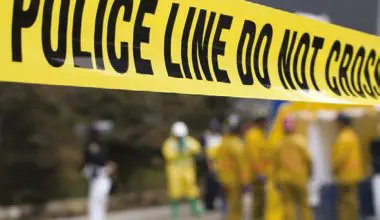Envision the following: A suspect acts irrationally in a public venue and threatens surrounding individuals with a “simulated” weapon. Along with issued threats that he “will kill someone,” he simulates a grasped handgun within a front jacket pocket and additionally states, “I have a gun.”
At this point in time, no one has actually observed the supposed—yet declared— handgun. Numerous 911 calls are placed. Officers arrive on scene and are informed via numerous witnesses of the suspect’s prior actions and statements. They observe the suspect, who is walking back and forth in an erratic manner as he approaches one civilian after another. His hand intermittently goes in and out of his front jacket pocket.
The immediate area is uncontrolled, and numerous individuals are observing the officers’ actions and fi lming the unfolding event with cell phones. Despite the officers’ warning to exit the area, witnesses steadfastly remain and continue to observe the event.
The complexities of the foregoing scenario are self-evident. Should the officers utilize deadly force? If so, to what degree can they allow the situation to degrade to such a point? Should they attempt deployment of less-lethal munitions such as the Taser or shotgun? Should they even contemplate deploying OC spray? Should they attempt negotiations? Should they closely approach with a vehicle to utilize it as cover? What if the suspect is indeed armed and begins shooting into the gathering crowd as the officers attempt any of the foregoing short of deadly force?
Perhaps officers in such a situation would then be criticized for not shooting.
There are no easy answers to such a scenario. No viable method is available to officers on scene to know defi nitively whether the suspect is, in fact, armed. Officers have no way of knowing the motivations of the suspect or his ultimate intentions. They are not aware of past psychological issues, intoxication, drug infl uence, or any other relevant information. In a sense they are “fl ying blind,” with an audience watching and recording their every move.
Should deadly force be applied and the suspect proved to be unarmed, lawsuits will be likely be forthcoming. Opposition experts will testify that actions you took were the causal eff ects that led to the shooting. They will testify that actions “they would have taken” would not have resulted in deadly force application and therefore your actions were not reasonable.
No doubt studies exist concerning the phenomenon of “suicide by cop.” But despite the studies and best eff orts of individuals to understand and deal with the problem, it most probably will persist. It is both complex and perplexing. Each incident can evolve rapidly or be prolonged.
It does require that officers on scene think on their feet to the best of their ability. The degree to which they hazard themselves is entirely driven by the situation itself. The chance they take in regard to the degree to which they allow the situation to deteriorate will vary as well.
Were it an elementary school setting, perhaps the response would diff er markedly from an open-air venue populated with few bystanders.
The reason I discuss this situation is that from time to time, I receive cases where an individual determined to force the hand of responding officers. For whatever reason, the individual has elected to cause actions that force the officers to respond in a predictable manner. As officers can never know with 100% certainty the motivations, veracity, or intent of the individual, they must respond with the information known to them at that precise time.
Years ago, I participated in a SWAT call-up wherein an individual had fi red numerous shots and barricaded himself in his home. We ultimately had to remove our vests and crawl the entire length of the crawlspace of the residence to reach his position.
When we approached him, he was sleeping and had a Sterling machine gun held in his hands atop his chest. My partner and I managed to gently remove it before he awoke—and the fi ght began. The suspect proved to be the son of an LAPD Sergeant. His wife had left him and he’d lost his job on the same day, as I recall. I never forgot that call. It could very well have resulted in a suicide at the hands of an officer.
There are no easy answers in such situations. Experience on behalf of the officer will most probably be the best factor in providing a positive outcome. Whereas a junior officer might fi re immediately, an experienced officer might wait it out and gauge the incident based on past situations.
Again, there are never easy answers to such complex problems. Perhaps the best course of action will always be based on experience, sound tactics, and common sense.



